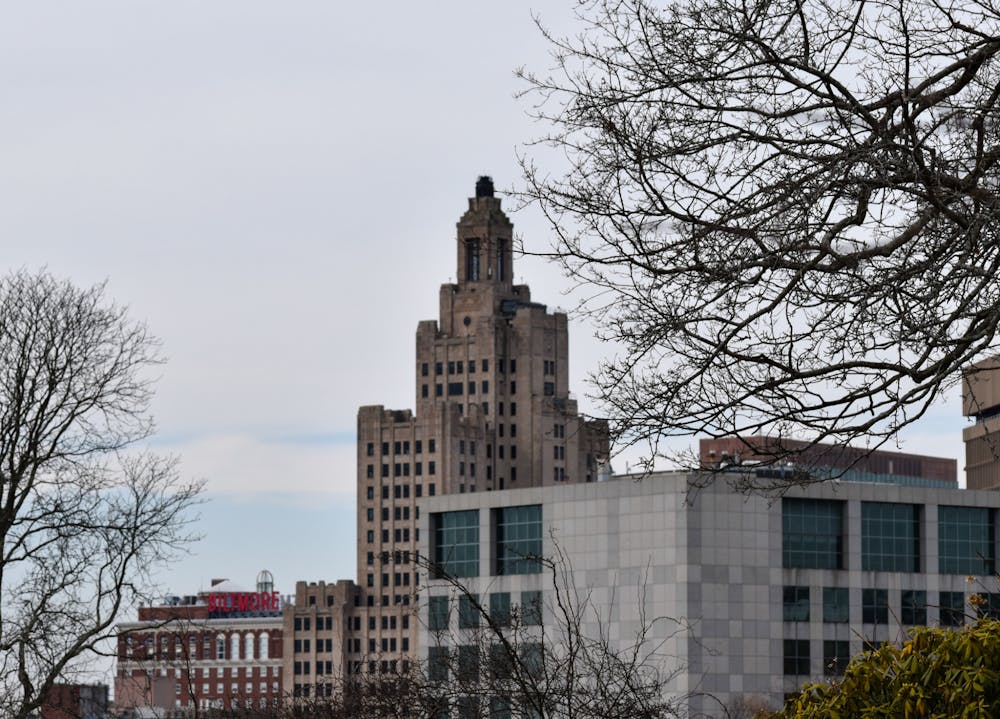The redevelopment and repurposing of the Industrial Trust Company building, known as the Superman building, has designated 20% of total planned apartments as affordable. While some housing experts question how affordable these units really are, they agreed that adding to the city’s housing stock will be beneficial.
The Superman Building, a 26-story office tower built in 1928, is Rhode Island’s tallest building. It has been empty since its previous tenant, Bank of America, left the building in 2013. The building will be renovated and converted into 285 housing units and retail spaces
Last fall, the Providence City Council approved a Tax Stabilization Agreement for High Rock Development, the building’s owner, WPRI previously reported. Without the TSA, High Rock would have to pay $56.2 million in taxes, but the deal brings the total amount paid down to $26.8 million. The estimated cost of the project is $223 million. The TSA was passed with two objections by Councilors Mary Kay Harris and Katherine Kerwin.
Brenda Clement, director of HousingWorks RI at Roger Williams University, said that although there are affordable units in the building, the project is “not likely to target those most in need and those … who are filling up our warming shelters and our shelter system.”
High Rock did not respond to multiple requests for comment.
Fourteen of the 285 apartments would be designated for people making up to 80% of the area median income, 14 for those making no more than 100% AMI and 29 for those making no more than 120% AMI. Rent in the Superman Building’s designated affordable units would range from $1,384 to $2,076 a month.
Though these units have been designated as affordable, “only even a small number of those are at the 80% (AMI) level, and 80% is the highest end of what you can really call affordable housing,” said Peter Asen ’04, deputy director of development and governmental affairs for the Providence Housing Authority.
Still, Superman’s redevelopment isn’t a “bad thing in terms of the overall housing crisis,” Asen said. “Housing is probably as good of a use as any for it. It’s a good thing that it’s not going to be sitting empty after all this time … but there’s definitely a reasonable debate to be had about whether the amount of public investment in the property is worth it.”
“I certainly would like to see more units at the 80% and below level, rather than having them at 80, 90 and 100%,” Asen added.
“As Rhode Island continues to lead the region in our economic recovery, this project will help to maintain that momentum by reinvigorating downtown Providence, creating good-paying construction jobs, increasing our state’s market-rate and affordable housing supply and generating further opportunities for the residents and businesses of our capital city,” Gov. Dan McKee said last April when the project was announced.
“Affordability is a challenge both in the city and state,” Ward 1 Councilman John Goncalves ’13 MA’15, who voted to approve the TSA, told The Herald. He is optimistic that the affordable units will help to alleviate the crisis in Providence.
Goncalves is also excited about the economic prospects of the redevelopment. “Downtown has seemingly been frail throughout the pandemic and it hasn’t realized its full potential,” he said. “Having 285 residential units downtown that will contribute to the local restaurant, tourism, event and hospitality industries downtown is going to be a game changer for the city.”
Goncalves added that the project will “create 1,600 construction jobs with the goal of hiring 20% minority- and women-owned businesses” to contribute to the redevelopment.
Housing has been a persistent problem in Providence, Clement said. Over a third of households in the state “are cost-burdened or spending more than a third of their income on housing. And so for many, many people, that makes it difficult to keep a roof over their head every day,” she said. Providence has not been building sufficiently to keep up with need since the mid-1980s, she added.
“Within the state as a whole, but especially in Providence, there is just not enough supply of housing. During the pandemic, rents have really gotten out of control,” Asen said. “The number one thing is definitely just building more and addressing the different barriers to doing that.”
“Building more income-restricted and affordable housing to people at low and moderate-income is obviously very important,” he added.
Though it doesn’t provide access to unhoused communities, the project may ultimately be beneficial, Clement said. “We need housing at varying income levels as well to meet growing demand, but it’s not necessarily going to help people who are in shelters tonight.”
With an ongoing need for more affordable housing, organizations like HousingWorks RI will continue to work to eliminate local barriers, Clement said. “Every time I think about the Superman building, I wish there was a Superman solution for this problem, that we had somebody coming in and addressing things. But it’s not easy.”
“It takes a lot of folks to come together and a lot of people to work hard to make this all happen,” Clement said. “But everybody deserves a safe and decent place to lay their head at night.”
Liliana Greyf is a senior staff writer covering College Hill, Fox Point and the Jewelry District, and Brown's relationship with Providence. She is a sophomore studying Literary Arts and a proponent of most pickled vegetables.





